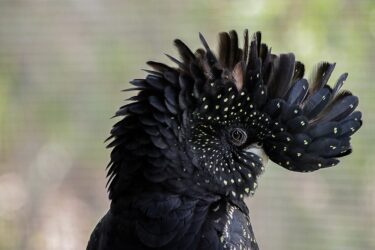Share this article
Governments and businesses are finally starting to focus on the importance of nature and its restoration. Nature and its ecosystems, sometimes referred to as natural capital, are being rapidly depleted and remain critically undervalued in financial and corporate decision-making. To change this status quo globally, financial mechanisms, such as a nature market, are being explored with the hope of driving more investment towards natural capital, nature restoration and nature repair.
In Australia, the government introduced the ‘Nature Repair Market Bill’ in early 2023. After months of negotiation, it finally passed through parliament in December 2023, creating the first-ever national voluntary framework for a nature market. Here we explore what the Nature Repair Market is, why do we need it, what are biodiversity certificates, who will use the market and how will the market and Biodiversity Certificates be used by investors and corporate organisations.
What is the Nature Repair Market?
The Nature Repair Market aims to encourage and facilitate private finance towards the preservation and restoration of Australia’s unique natural environment, thereby boosting national investment in halting biodiversity decline and rejuvenating nature. It equally seeks to incentivise landholders for their efforts in conserving biodiversity.
The Nature Repair Market will allow registered projects to generate tradable, government-backed Biodiversity Certificates connected to biodiversity preservation and restoration activities. Voluntary buyers can purchase these certificates to meet their nature positive targets and demonstrate investment in Australia’s biodiversity.
The Market will be voluntary and regulated by the Clean Energy Regulator (CER), which will have monitoring and enforcement powers. Projects will be required to meet regulations and monitoring, reporting and verification requirements regarding the implementation of project activities and delivery of environmental outcomes.
The Nature Repair Market forms part of the government’s Nature Positive Plan and is intended to facilitate the significant natural capital investment necessary for Australia to meet its goal of protecting 30 per cent of our land and 30 per cent of our oceans by 2030.
Who is the Nature Repair Market for and what types of projects will it cover?
On the demand side, interest in nature repair investment is anticipated from various stakeholder groups. Trends in the carbon market show participants are increasingly seeking credits from projects that not only address carbon-related concerns but also deliver benefits to the broader natural environment. Environmental, Social, and Corporate Governance (ESG) strategies are also anticipated to drive demand in the nature repair market, as are corporate commitments made through new reporting frameworks currently gaining momentum such as the Taskforce for Nature-Related Financial Disclosures.
On the supply side, stakeholders including First Nations people, conservation groups, governments, and farmers may benefit from the opportunity to develop projects aimed at ecological restoration and sustainability.
Example projects
Projects can be developed on land, within inland waterways (such as lakes and rivers), in marine and coastal areas on the Australian mainland or external territories. Projects may include:
- improving or restoring native vegetation through activities such as fencing or weeding
- planting a mix of local native species
- protecting rare grasslands that provide habitat for an endangered species.
Landholders can also engage in initiatives to preserve current habitats, rehabilitate and improve degraded areas and create new plantings to support biodiversity and animal habitats.
What are Biodiversity Certificates?
The Act states “A biodiversity certificate represents the biodiversity outcome that a registered biodiversity project is designed to achieve. Biodiversity certificates are the property of their registered holders, and may be transferred.”
Each project will have a single tradable certificate. Owners can sell these certificates to buyers under commercial contracts.
Tracking certificates, their status, and ownership will happen through a public Biodiversity Market Register. This registry will keep records of all registered biodiversity projects and certificates and help certificate owners demonstrate their support for nature repair.
Biodiversity certificates will provide clear information for easy comparison and valuation of projects within the market. Regular project reports will describe and confirm environmental outcomes.
Certificates will be traded through the National Stewardship Trading Platform, linking landholders and private buyers of biodiversity and carbon outcomes. The marketplace will enable users to share information, contact listing owners, and negotiate commercial deals directly once connected. Registered users can create public project listings displaying environmental offerings or needs.

How will the market and Biodiversity Certificates be used by corporate organisations?
Acquiring biodiversity certificates through the Nature Repair Market should give businesses and investors a solid foundation for their ‘green claims’ on nature repair projects. With this new market, organisations can explore opportunities to pursue a nature-positive strategy and meet stakeholder expectations regarding biodiversity risk management.
Having easier access to reputable biodiversity projects can help businesses fulfill their ESG objectives and invest in nature-positive impacts. With increasing scrutiny on greenwashing, there’s an increased expectation from stakeholders for businesses to take action against biodiversity loss.
Can biodiversity credits be used as offsets?
No. It is important to note that the initial bill included language around the use of the certificates for offsets, however, the Bill that passed parliament states:
76A Biodiversity certificates not to be used for environmental offsetting purpose
(1) A biodiversity certificate must not be used for an environmental offsetting purpose.
(2) This section has effect despite any other provision of this Act or any other law of the Commonwealth, or a State or Territory.
(3) To avoid doubt, section 225 (Concurrent operation of State and Territory laws) does not apply to this section.
What will Governance look like?
The Bill ensures the integrity, enforcement, and genuine environmental impact of projects. For each registered biodiversity project, a methodology determination is mandatory. Proposed methodologies will undergo review by the Nature Repair Committee, incorporating compliance requirements and biodiversity integrity standards. These standards will guarantee that projects generate authentic nature improvements.
Regulation of the market falls under the Clean Energy Regulator, equipped with monitoring and enforcement authority to oversee compliance with the established regulations. This involves monitoring, reporting, and notification of project activities and environmental progress.
How will the Nature Repair Market and the TNFD (Taskforce on Nature-related Financial Disclosures) align?
There is a possibility that Australia’s Nature Repair Market could intersect with the TNFD, as both seek to align financial flows with nature-positive outcomes and to increase transparency and accountability on nature-related issues.
How will the Nature Market align with the Carbon Market?
The market will run in parallel with carbon markets. The Department of Climate Change, Energy, the Environment and Water states that landholders will have the opportunity to acquire certificates from carbon projects that simultaneously enhance biodiversity. The oversight by the Clean Energy Regulator aims to align the markets, facilitating an easier process for landholders to participate in both schemes.
Why do we need a Nature Repair Market?
The World Economic Forum estimates that over half of the world’s GDP – or approximately US$44 trillion of economic value – is moderately or highly dependent on nature (World Economic Forum).
We all rely on natural capital; oceans, minerals ecosystems, and atmosphere. We also heavily depend on services natural capital provides like fuel, food, fibre medicines, and services like water filtration, erosion control, and climate regulation. However, most of these services provided by nature are unpriced or economically invisible. The invisible, and yet unaccounted for dependencies on natural capital possess significant unmanaged risks and stability for communities around the world and also businesses.
At the United Nations Biodiversity Conference (COP 15) in December 2022, over 190 countries (including Australia) agreed to the Kunming-Montreal Global Biodiversity Framework (GBF). Historic in its ambition to commit nations to protect 30 per cent of the earth by 2030 (30×30), the COP15 agreement is consequential for business; with its 23 voluntary targets including goals to stem the risks that biodiversity loss poses to the global financial system (Convention on Biological Diversity).
On the back of this growing momentum, governments and businesses are increasing their focus on natural capital and nature repair.
What is the Innovative Biodiversity Monitoring Grants Program?
The Innovative Biodiversity Monitoring Grants Program has already been established by DCCEW to encourage innovative and cost-effective solutions for biodiversity monitoring, with the aim of supporting delivery of environmental outcomes from the Nature Repair Market. Determining the financial support and/or monetisation of credits for these projects will be the next crucial step.
Encouraging signs on the road to a nature positive future
Australia’s Nature Repair Market stands as a pioneering initiative, representing the world’s first voluntary biodiversity market. Its development holds the promise of significantly expanding Australia’s capacity to garner broader support for a future that prioritises nature positivity and has the potential to be a transformative force for biodiversity and the conservation of natural capital.
By encouraging voluntary participation, the Nature Repair Market in Australia aims to redefine the landscape of conservation efforts, presenting an innovative model that can serve as a global example for sustainable practices and the preservation of biodiversity.
Want to Learn More About the Nature Repair Market and Nature-based Solutions?
Our team are experts in identifying cost-effective and impactful nature-based solutions, that protect, sustainably manage, and restore natural capital and modified ecosystems, reach out to us today.

